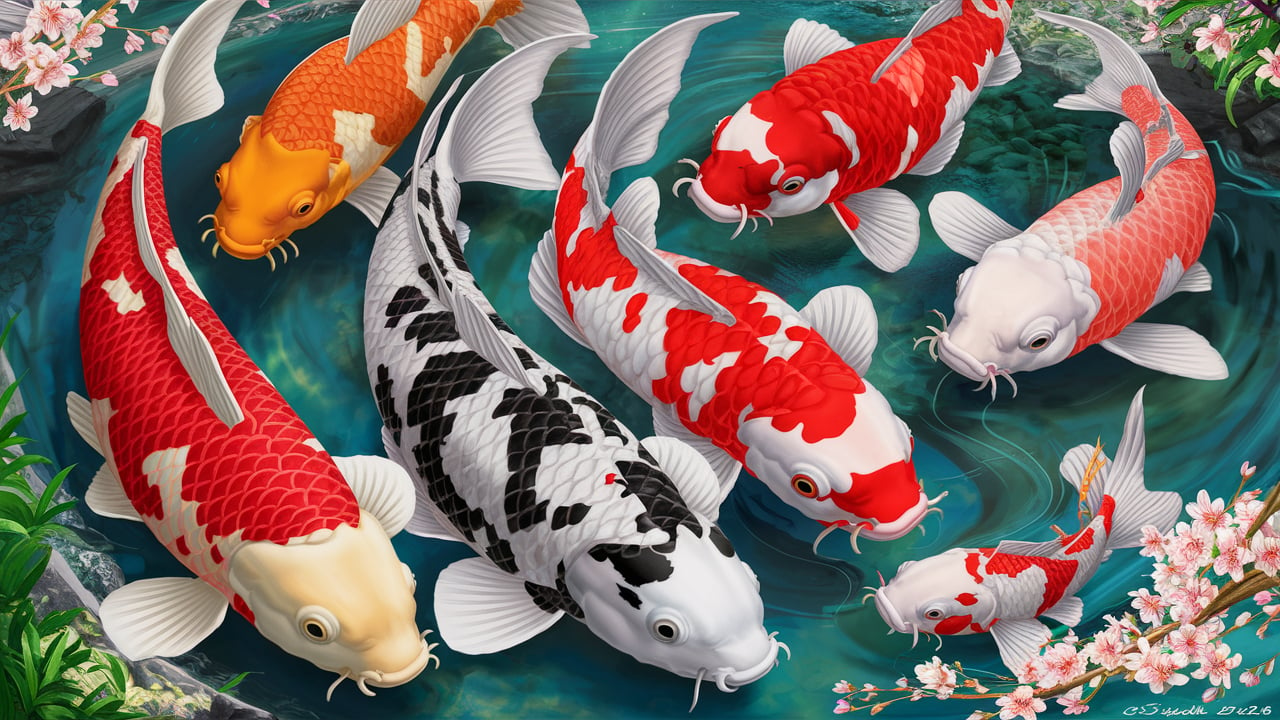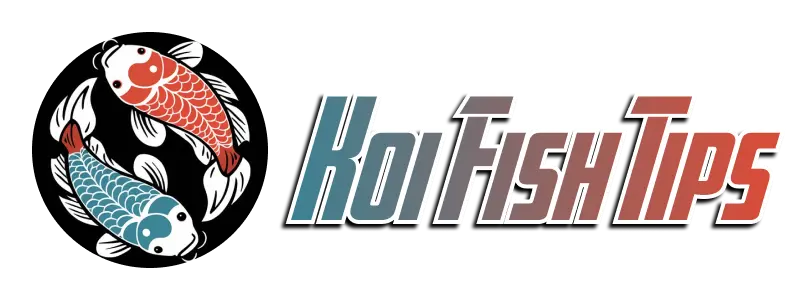Welcome to Koi Fish Tips, your guide to the captivating world of koi! If you’re intrigued by these vibrant, graceful fish and want to learn more about the Koi Fish Definition and their fascinating world, you’ve come to the right place. This comprehensive guide will delve into the history, characteristics, care, and the joy they bring to pond owners worldwide.
Koi Fish Definition
Koi, also known as “brocaded carp,” are a type of domesticated carp (Cyprinus rubrofuscus) prized for their stunning coloration and patterns. These fish are not just beautiful; they are also a symbol of good luck and prosperity in many cultures, particularly in Japan, where they originated. Their journey from humble carp to prized ornamental fish is a testament to centuries of selective breeding and cultural appreciation.
The Origins of Koi: A Journey from Carp to Living Art
Koi’s journey began in East Asia, specifically in Japan, where they were originally bred for food. However, over time, Japanese breeders began to appreciate the natural variations in color and pattern among carp. Through selective breeding, they cultivated koi with increasingly vibrant and intricate markings, transforming these fish into living works of art.
The Cultural Significance of Koi: More Than Just a Fish
Koi hold a special place in Japanese culture, symbolizing good luck, perseverance, and strength. They are often featured in traditional Japanese gardens and ponds, adding a touch of serenity and beauty to these tranquil spaces. The vibrant colors of koi are also thought to bring good fortune and ward off evil spirits.
The Different Types of Koi: A Spectrum of Beauty
Koi come in a wide variety of colors, patterns, and scales, each with its own unique name and characteristics. Some of the most popular types include:
- Kohaku: White with red markings.
- Taishō Sanshoku: White with red and black markings.
- Showa Sanshoku: Black with white and red markings.
- Bekko: Black or red with white markings.
- Hikarimono: Metallic scales with a shimmering effect.
- Goshiki: Five colors (black, white, red, yellow, and blue).

The Importance of Koi in the Travel Industry: A Unique Experience
Koi ponds are a common feature in many Japanese gardens and parks, attracting tourists from around the world. These serene settings offer a peaceful escape from the hustle and bustle of city life, allowing visitors to appreciate the beauty and tranquility of these living jewels.
Caring for Koi: Creating a Healthy Haven
Koi are relatively hardy fish, but they do require proper care to thrive. Here are some key considerations for creating a healthy and happy environment for your koi:
The Pond: Your Koi’s Home
- Size: The size of your pond is crucial, as koi can grow quite large. A general rule of thumb is to allow one gallon of water per inch of koi length. However, it’s always best to err on the side of a larger pond to ensure ample space for your koi to swim and grow.
- Depth: A pond with a minimum depth of 3 feet is recommended to provide adequate water volume and temperature stability.
- Filtration: A robust filtration system is essential for maintaining water quality. This should include biological, mechanical, and UV filtration components.
- Plants: Aquatic plants add beauty and oxygen to your pond, creating a more natural and healthy environment for your koi.
Water Quality: The Foundation of Koi Health
- Temperature: Koi are cold-water fish and thrive in temperatures between 50-75 degrees Fahrenheit.
- pH: The ideal pH range for koi is 7.0-8.0.
- Ammonia, Nitrite, and Nitrate: These are harmful chemicals that can build up in pond water. Regular water testing and water changes are essential to maintain healthy levels.
Diet: Nourishing Your Koi
- High-Quality Food: Choose a high-quality koi food that is formulated to meet their nutritional needs.
- Feeding Frequency: Feed your koi twice a day, in the morning and evening. The amount of food should be adjusted based on the size and activity level of your koi.
- Variety: Offer a variety of foods, including pellets, flakes, and live foods, to provide a balanced diet.
Health and Disease Prevention: Keeping Your Koi Healthy
- Quarantine: Always quarantine new koi for several weeks before introducing them to your main pond.
- Regular Inspections: Inspect your koi regularly for signs of illness, such as lethargy, loss of appetite, or unusual behavior.
- Cleanliness: Keep your pond clean and free of debris to prevent the spread of disease.
In Conclusion
More than just beautiful fish, koi are a symbol of resilience, perseverance, and the beauty of nature. Their journey from humble carp to prized ornamental fish is a testament to the power of selective breeding and the appreciation of beauty in all forms. Understanding the Koi Fish Definition unlocks a world of wonder and appreciation for these living jewels. Whether you’re a seasoned koi enthusiast or just starting your journey, Koi Fish Tips is here to guide you every step of the way.

Bài viết liên quan
What Do Koi Fish Eggs Look Like? Recognizing And Caring For Koi Spawn
Koi fish, with their vibrant colors and graceful movements, are a captivating sight in any [...]
Jul
How Long Can Koi Fish Live Without Food?
How long can koi fish live without food? As a responsible koi keeper, understanding the [...]
Jul
Koi Fish Behavior: Tips For Keeping Koi Healthy And Beautiful
Koi fish, with their vibrant colors and graceful movements, have captivated aquarists and pond enthusiasts [...]
Jul